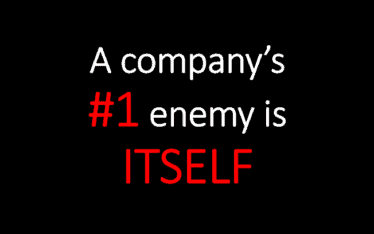Overcome employee resistance to organizational change
Resistance to change can doom organizational transformation
In the 1920s, H.P. Lovecraft said:
The oldest and strongest emotion of mankind is fear, and the oldest and strongest kind of fear is fear of the unknown
This quote, said over 90 years ago, still holds true today when it comes to the workplace. Understanding the most common reasons people object to change gives you the opportunity to plan your change strategy to address these factors.
Employee resistance to organizational change – Why do employees resist change?
Resistance to change manifests itself in many ways, from foot-dragging and inertia to petty sabotage to outright rebellions.
The best tool for leaders of change is to understand the predictable, universal sources of resistance in each situation and then strategize around them.
How to overcome resistance to organizational change
Employee resistance to change is a complex issue facing management in the complex and ever-evolving organization of today. The process of change is ubiquitous and employee resistance is a critically important contributor to the failure of many well-intend and well-conceived efforts to initiate change within the organization.
Although leaders can’t always make people feel comfortable with change, they can minimize discomfort. Diagnosing the sources of resistance is the first step toward good solutions. And feedback from resistors can even be helpful in improving the process of gaining acceptance for change.
Short URL & title:
Employee resistance to organizational change — https://www.torbenrick.eu/t/r/jec
Share it:
If you enjoyed this article, please take 5 seconds to share it on your social network. Thanks!









I’d add that one of the main barrier’s I’ve come across in big organisations especially is the frequency of change – there’s always a new system to transition too, new technology, new processes.
Employees recognize and have to live through the inefficiency in transitioning which is what really frustrates them. When it seems to be happening all the time, you get the cry wolf scenario where it becomes very hard to convince them that *this* one is really worth the effort on their parts.
Indeed change can be a discomfort at some point like you stated Torben. It even can become very personal. When we do a job for years with a certain attitude and approach we honoustly believe we do it right. When suddenly things get changed and we are expected to drop the prior attitude and approach we might feel rejected and judged. This hurts, and we might get upset.
We need to acknowledge this logical human mechanism. Of course understanding doesn’t mean a person shouldn’t do it but when we help him or her out and support them facing difficulty sometimes things will be better. I recommend to use especially those people to assist in steering groups to improve the process guided by the new strategy.
For me most staff will reluctantly accept change if they understand the why. Taking time to get the message, “for a progressive change”, across is the key. All staff will have a little what is in it for me, by seeing how the change positively impacts their role will smooth the way.
They do not have to like the change just understand and accept the business need to adapt and change.
This is a hard but necessary first step.
Every change is scary and uncomfortable at first. Many people don’t want to get out of their comfort zone because they don’t know what to expect out there. The manager is the person who should lead the employees on the road to change.
To get a positive attitude from the employees toward changes…..
.- Must be informed about reasons for the change
.- Should be able to understand the benefits of the change
.- Must know the road-map, meaning, about planned milestones and timeframe (i.e., where are we going and when will get there)
.- How the changes would impact my (comfort) job
.- Which are the risks involved
.- When the next change of direction will be implemented
In pragmatic terms, you don’t make money during a change – only on those brief plateaus of stability. So, the first thing to do is prioritise all those change projects and only deal with the best payback for effort – but this should be already known as fundamental to management strategy. Secondly, when we propose that a change is coming but its final form will be determined by YOU and we NEED your expertise to adapt it to the realities and constraints of this organisation – the change will find much greater acceptance (be true to your word – involve and respect). All this up-front research will lead to a realistic and engaging change plan. Leadership’s role is to implement the employees enhancements and give them confidence that it will work and they will be better off. Often, it will be necessary to remind people that the change WILL HAPPEN, and they now have the choice to act upon it or to be acted upon by it.
The elephant in the room. Sometimes employees recognize a flawed plan or one lacking any real strategy. Calling them blockers does not help resolve the issue. Managers often do not consult their staff before or during a change to understand their concerns and make improvements. This is a particular concern in revolutionary change.
Change is constant, and organizations that are nimble and flexible, tuning into their workforce, listening to them, involving them are higher performing organizations as a result of change.
These are good tips on resistance.
The best start, though, seems to be Jeanenne LaMarsh explanation that resistance comes from three basic sources:
1. “I don’t want to leave the Current State”. Because it is comfortable, because I have power here, etc.
2. “I don’t want to live in the Future State”. Because it has not been well explained yet, or because it has been well explained and it will not be good for me, etc..
3. “I agree with the need to leave the Current State and I agree with the proposed Future State, but I am afraid of the Transition (the Delta)” because I don’t trust the leaders, because we will not have the necessary resources, etc..
Instead of opening to an infinite number of reasons for resistance, these three basic sources have proven to be a great initial approach. The more detailed reasons are better pursued from there on.